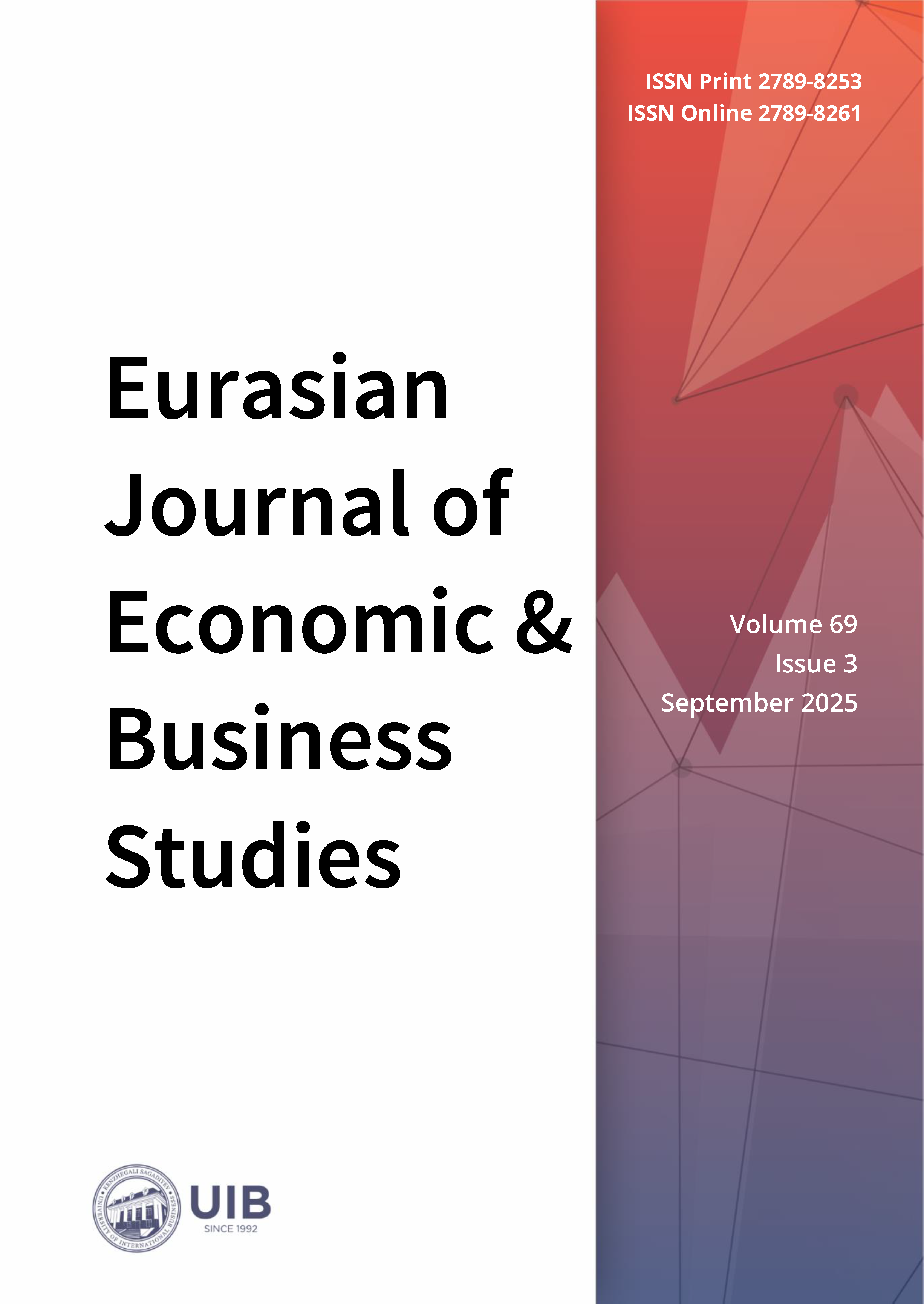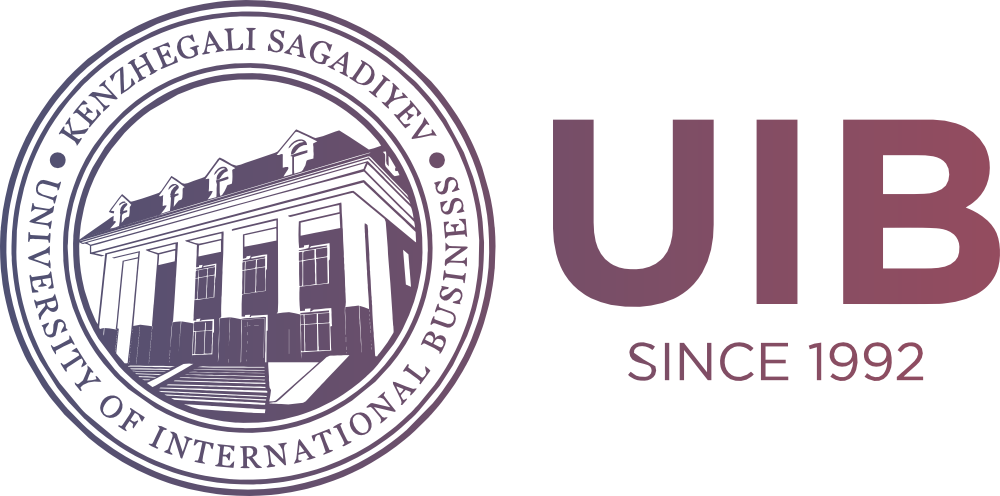Spatial Zoning of Agrotechnological Hubs in Kazakhstan: Developing a Methodological Framework
DOI:
https://doi.org/10.47703/ejebs.v69i3.539Keywords:
Agrotechnology, Agrohub, Agricultural Economy, Innovation, Spatial Zoning, Region, Regional DevelopmentAbstract
The development of Kazakhstan's agro-industrial complex requires the search for practical tools for the territorial location of innovation infrastructure. The purpose of this study is to develop a methodology for spatial zoning of agro-technological hubs in Kazakhstan based on quantitative assessment of innovation and agricultural potential of regions. The study uses microdata from World Bank Enterprise Surveys for 2024 on the formal agroindustrial sector and related industries, including processing, production, agricultural machinery and services. Using ten indicators normalised using the min–max method and aggregated with equal weights, it was constructed integral indicators such as the Innovation Potential Index (IPI) and the Agricultural Production Potential Index (API). The average values for these indices vary from IPI=0.052 to API=0.240 for the least developed regions and IPI=0.231 to API=0.413 for the most developed ones. The results showed that areas with high potential require consolidation of hubs, development of applied research, and development; territories with medium potential need technology transfer mechanisms, management practices; and regions with low potential need basic competencies formation, digitalization and modernization of infrastructure. The method is replicable and transportable to future WBES waves; limitations include the focus on the formal sector (WBES does not cover primary farms and informal units), as well as the cross-sectional design. Overall, the methodology can be used to monitor the dynamics of regional development and inform strategic adaptation, and it can be applied to future waves of WBES and other countries' industries.
Downloads
References
Abdullah, A. J., Doucouliagos, H., & Manning, E. (2015). Does education reduce income inequality? A meta‐regression analysis. https://doi.org/10.1111/joes.12056
Audretsch, D. B., & Feldman, M. P. (1996). R&D spillovers and the geography of innovation and production. American Economic Review, 86(3), 630–640. https://www.jstor.org/stable/2118216
Becker, W., Saisana, M., Paruolo, P., & Saltelli, A. (2017). Weights and importance in composite indicators: Closing the gap. Ecological Indicators, 80, 12–22. https://doi.org/10.1016/j.ecolind.2017.03.056
Caliński, T., & Harabasz, J. (1974). A dendrite method for cluster analysis. Communications in Statistics, 3(1), 1–27. https://doi.org/10.1080/03610927408827101
Cirera, X., Fattal, R., & Maemir, H. B. (2016). Measuring firm-level innovation using short questionnaires. World Bank Policy Research Working Paper. https://openknowledge.worldbank.org/server/api/core/bitstreams/ 1f1b3ecd-731e-57af-be8f-e1cf95695116/content
Cooke, P. (1997). Regional innovation systems: Institutional and organisational dimensions. Research Policy, 26(4–5), 475–491. https://doi.org/10.1016/S0048-7333(97)00025-5
Cooke, P. (2001). Regional innovation systems, clusters, and the knowledge economy. Industrial and Corporate Change, 10(4), 945–974. https://doi.org/10.1093/icc/10.4.945
Delgado, M., Porter, M. E., & Stern, S. (2014). Clusters, convergence, and economic performance. Research Policy, 43(10), 1785–1799. https://doi.org/10.1016/j.respol.2014.05.007
Enterprise Surveys. (2024). Home Enterprise Surveys. World Bank. Retrieved from https://www.enterprisesurveys.org/en/enterprisesurveys
Fang, G., Sun, D., Yu, Y., & Zhang, Z. (2025). A landscape-clustering zoning strategy to map multi-functional cropland. Agriculture, 15(2), 186. https://doi.org/10.3390/agriculture15020186
Greco, S., Ishizaka, A., Tasiou, M., & Torrisi, G. (2019). On the methodological framework of composite indicators. Social Indicators Research, 141, 61–94. https://doi.org/10.1007/s11205-017-1832-9
Jin, X. (2011). K-means clustering. In Encyclopedia of Machine Learning. Springer. https://doi.org/10.1007/978-0-387-30164-8_425
MacQueen, J. (1967). Some methods for classification and analysis of multivariate observations. In Proceedings of the Fifth Berkeley Symposium on Mathematical Statistics and Probability (pp. 281–297). University of California Press. https://matteucci.faculty.polimi.it/Clustering/tutorial_html/ kmeans.html?utm_
Malerba, F. (2002). Sectoral systems of innovation and production. Research Policy, 31(2), 247–264. https://doi.org/10.1016/S0048-7333(01)00139-1
Manatovna, T. A., Dabyltayeva, N. E., Ruziyeva, E. A., Sakhanova, G., & Yelubayeva, Z. M. (2023). Unlocking intersectoral integration in Kazakhstan’s agro-industrial complex: Technological innovations, knowledge transfer, and value chain governance as predictors. Economies, 11(8), 211. https://doi.org/10.3390/economies11080211
OECD & Joint Research Centre. (2008/2005). Handbook on constructing composite indicators: Methodology and user guide. Paris: OECD Publishing. https://doi.org/10.1787/9789264043466-en
OECD. (2013). Agricultural Innovation Systems: A framework for analysing the role of the government. Paris: OECD Publishing. https://doi.org/10.1787/9789264200593-en
Porter, M. E. (1998). Clusters and the new economics of competition. Harvard Business Review, 76(6), 77–90.
Reyes, F., et al. (2023). Soil properties zoning of agricultural fields based on a K-means clustering analysis. European Journal of Agronomy, 150, 126930. https://doi.org/10.1016/j.eja.2023.126930
Rousseeuw, P. J. (1987). Silhouettes: A graphical aid to the interpretation and validation of cluster analysis. Journal of Computational and Applied Mathematics, 20, 53–65. https://doi.org/10.1016/0377-0427(87)90125-7
Stojanova, S., et al. (2022). Rural Digital Innovation Hubs as a Paradigm for Sustainable Business Models in Europe’s Rural Areas. Sustainability, 14(21), 14620. https://doi.org/10.3390/su142114620
Taishykov, Z. (2024). Management of innovation processes in agriculture. World Development Perspectives, 33, 100509. https://doi.org/10.1016/j.wdp.2024.100566
Tkacheva, A., et al. (2024). Problems and Prospects for the Development of Cluster Structuring in the Economy of Kazakhstan’s Agricultural Sector: Theory and Practice. Economies, 12(7), 185. https://doi.org/10.3390/economies12070185
Toillier, A., Mathé, S., Saley Moussa, A., & Faure, G. (2022). How to assess agricultural innovation systems in a transformation perspective: A Delphi consensus study. The Journal of Agricultural Education and Extension, 28(2), 163–185. https://doi.org/10.1080/1389224X.2021.1953548
Wandel, J. (2010). The cluster-based development strategy in Kazakhstan's agro-food sector: A critical assessment from an Austrian perspective, Discussion Paper, No. 128, Leibniz Institute of Agricultural Development in Central and Eastern Europe (IAMO), Halle (Saale). https://nbn-resolving.de/urn:nbn:de:gbv:3:2-10641
World Bank. (2012). Agricultural Innovation Systems: An Investment Sourcebook. Washington, DC: World Bank. https://documents1.worldbank.org/curated/en/140741468336047588/pdf/672070PUB0EPI006 7844B09780821386842.pdf?utm_
World Bank. (2013). Kazakhstan Fostering Productive Innovation Project. Washington, DC: World Bank. http://documents.worldbank.org/curated/en/410881468039550416
World Bank. (2020). Innovation in Kazakhstan: From ideas to impact [Video]. Washington, DC: World Bank. https://www.worldbank.org/en/news/video/2020/04/14/innovation-in-kazakhstan-from-ideas-to-impact?utm_
Yuan, Y., Shi, B., Liu, X., Tian, Y., Zhu, Y., Cao, W., & Cao, Q. (2022). Optimization of management zone delineation for precision crop management in an intensive farming system. Plants, 11(19), 2611. https://doi.org/10.3390/plants11192611
How to Cite
Downloads
Published
Issue
Section
License

This work is licensed under a Creative Commons Attribution 4.0 International License.
Authors retain copyright and grant the journal right of first publication with the work simultaneously licensed under a Creative Commons Attribution (CC-BY) 4.0 License that allows others to share the work with an acknowledgment of the work’s authorship and initial publication in this journal.



